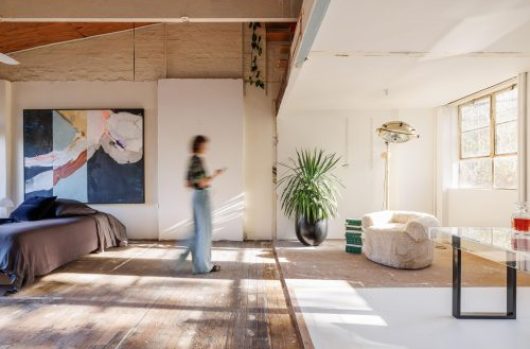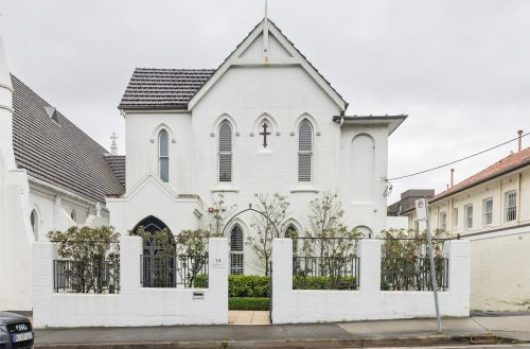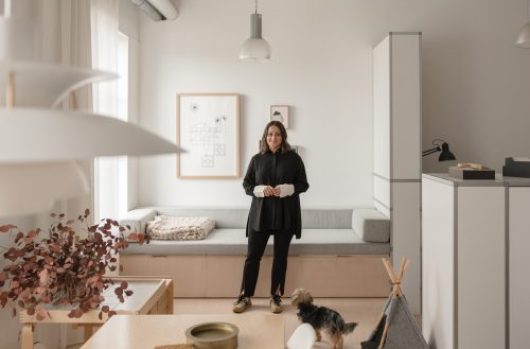24 Frames Per Second
BresicWhitney is currently the proud Visual Arts Partner of Carriageworks. This month, Carriagworks is presenting 24 Frames Per Second, a free exhibition running until 2 August. This spectacular exhibit explores the nexus between art, dance and film. The narrative of each artist’s individual practice is explored through rituals, shamans, public gatherings, the jazz lexicon, modern dance and landscape – represented on film. The body in motion, dance and choreography, are loose themes that unite all 24 works.

We caught up with featured Australian artist Christian Thompson to talk about this new work on his British identity and cultural hybridity. The video work is a hypnotic capture of him, Morris Dancing, against a black studio backdrop. Its eerie and singular focus, draws the viewer into a highly genteel dance, with its mesmerizing and repetitive rhythm.
Christian Thompson is an acclaimed artist born in 1978 to a military family in Gawler, South Australia. His father is from the Bidjara People and is mother is of British, Australian extraction. In Sydney and Berlin he is represented by Michael Reid Gallery. Thompson is also one of Australia’s emerging art scholars.
He recently completed his Doctorate of Philosophy at Oxford presenting a final show ‘We Bury Our Own’, at The Pitt Rivers Museum, Oxford. His recent thesis adds to his Masters in Theatre already attained from Das Arts Amsterdam and his Masters of Sculpture from RMIT.
In the show “We Bury Our Own” you combine elements and symbols from modern and ancient cultures, how did this begin?
I grew up in the nineties, so I am from a generation or culture of mashing. At that point in time, that’s what people did – they took different ideas, from different places and sort of mashed them together into something else.
Like Trip Hop music was an example of that. Grunge was a bit like that too– with all kinds of music sewn together. There was this whole kind of culture of not seeing borders or definitions and deliberately confounding things to make something new.
Tell me about this work? Why Morris Dancing, why now?
My Mum’s side is actually from the small town of Bampton, outside of Oxford and on May Day every year, Morris Dancers will come into the town and dance through the streets. I remember seeing it one morning, on my way to presidential collections and from that moment I thought I wanted to do something connected with my English heritage.
I also quite liked the pre-Christian pagan connection. I like the fact that Britain has this pagan history, it has this kind of mythology that is quite compelling.
Your work usually always deal with aspects of your Indigenous heritage and identity, how does this work vary?
I really grew up placed very firmly within my father’s culture, so for me the English side was sort of a bit unknown. I am interested in cultural synergies and out of the ‘We Bury Our Own’ series, I was working a lot with English folklore material so that really got me thinking about the traditions and rituals that exist in the British Isles. I also really felt a very strong affinity with the English landscape, and I found in the landscape a sense of comfort – but also a sense of inspiration. I wanted to explore that in this work.
How did your work at Das Arts doing your Masters of Theatre impact your ability to make this video work?
Das Arts was the kind of place where I really had to step out of my comfort zone. In that program we actually had to do two to three performances a week. We were just constantly making works and presenting them to the public. It was the hardest thing I ever did, but I also I learnt so much about myself and I think it really gave me a very strong constitution as a maker.
Where do your ideas come from?
I am a bit of a Bowerbird. I tend to absorb the world around me and that manifests in my work. Because I have artistic training and have studied so much, I also think I have a really good idea of how to represent those ideas visually.
But your personal experience and identity is often explored in your work?
It’s almost like there are three kinds of realities for me as an artist. There is my lived experience, then there is kind of a subconscious world, and then there’s my artwork. So there are three different interpretations of my lived experience.
Why are you so often featured in your works?
I think of myself more as a sort of armature for building layers on top of. They are not self-portraits in the sense that I am taking a photo of myself and presenting that to the world as me. That is not the intention. I think of myself, in my art, as conceptual portraits.
Christian Thompson will be giving a free talk at Carriageworks on Saturday 27 June, at 10.30am.
Lead image: Francois Chaignaud and César Vayssié, The Sweetest Choice, 24 Frames, Carriageworks, 2015.





